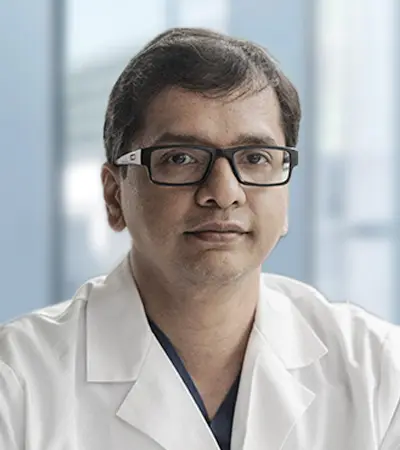
Endoscopic Resection for Large Polyps
Endoscopic Resection for Large Polyps
by Jonathan S. Feinberg

Sunil Dacha, MD
With early screening and surveillance, large polyps in the colon may be detected before they progress to invasive cancer that requires surgery. For patients with large polyps, Sunil Dacha, MD, Assistant Professor of Clinical Medicine, offers outpatient endoscopic procedures as organ-preserving alternatives to surgery.
Upon referral, Dr. Dacha and his team discuss treatment options with patients, explaining that they will perform a thorough endoscopic examination and decide on resection if there is no evidence of invasive cancer. Patients with large benign polyps on the surface mucosa may undergo endoscopic mucosal resection (EMR), in which solution is injected beneath the mucosa to separate it from the deeper layers, then the polyp on the surface is resected in a piecemeal fashion.
For patients with early-stage cancer, however, EMR may not suffice. These patients may benefit from endoscopic submucosal dissection (ESD), which is recommended for cancer that is confined to the mucosa, or where submucosal invasion is limited and highly focalized. As with EMR, solution is injected into the submucosa, but ESD delves deeper than EMR and removes a larger section to ensure negative margins.
Both EMR and ESD carry a risk of delayed bleeding or perforation, but patient outcomes compare favorably to surgery, and these endoscopic procedures spare the organs. Nonetheless, many patients who would be eligible for EMR or ESD have their polyps removed by surgery instead, which Dr. Dacha attributes to lack of awareness of these procedures or lack of local expertise—ESD, in particular, requires specialized training and expertise, so it is not yet widely available.
“There is a need to improve awareness among gastroenterologists and surgeons,” Dr. Dacha says, “and there is a need for patient education as well” to extend these organ-preserving procedures to more patients who would benefit.





